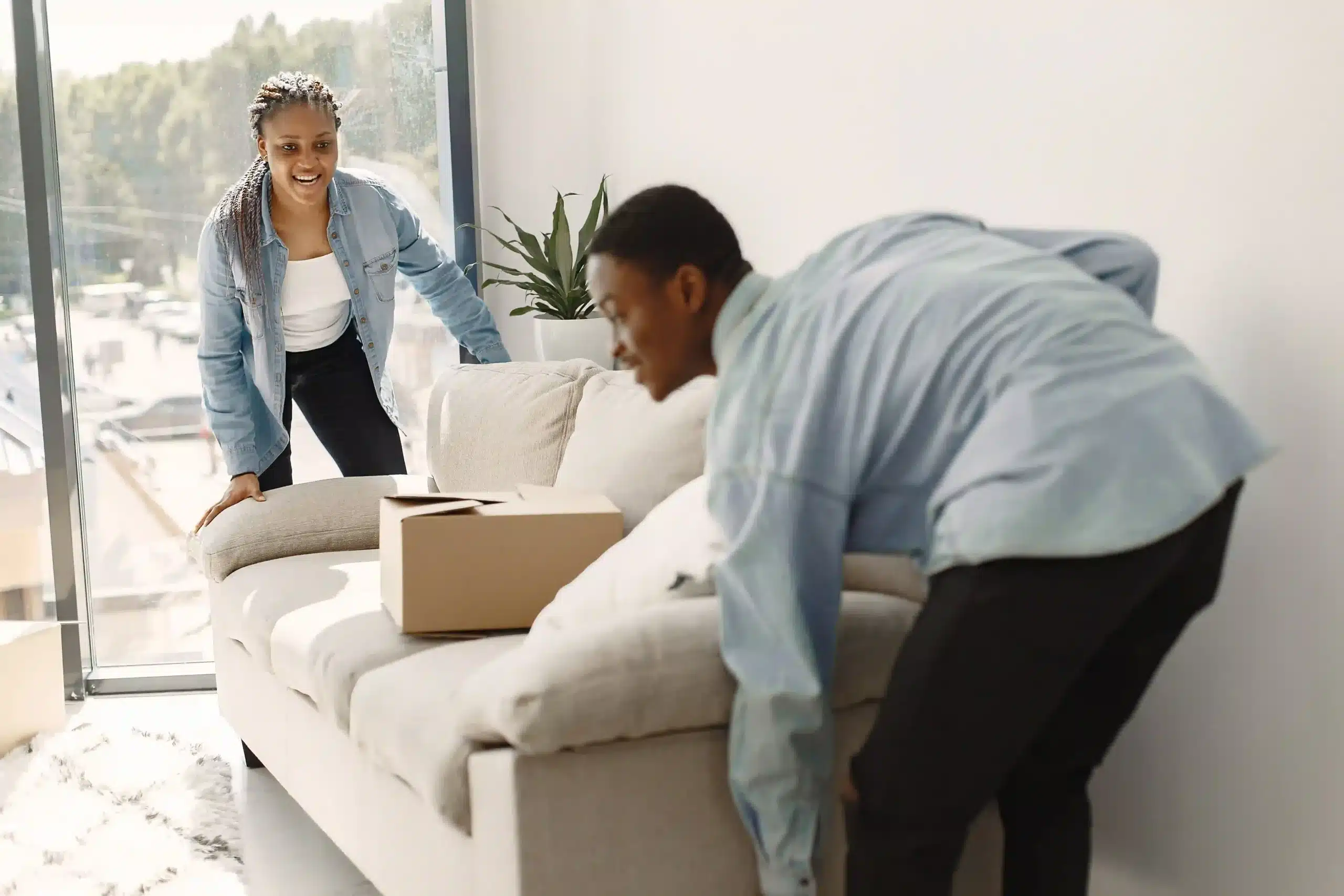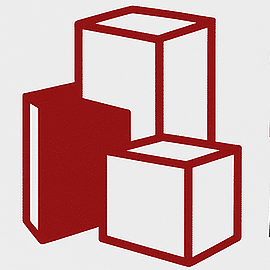
Furniture pieces are often hard to manage during long-distance moves because of how heavy and bulky they are. Many people don’t realize how complicated (and expensive) it can be to transport furniture out of state. If you’re a first-time mover, you might be wondering how to prepare to move out of state and whether you should rent a truck or just sell everything and start fresh.
If this sounds like you, don’t worry-we’ve got you covered. This article lays out everything you need to know about how to move out of state, giving you practical tips on DIY moving for a stress-free transition into your new home.
First Things First…
Good planning is the secret to a successful relocation. When you take time to prepare properly, you avoid making mistakes and increase the chances of everything going smoothly. Starting early gives you time to handle unexpected challenges. The following are some steps you should take before you start packing your belongings:
- Decide whether you are going to hire professional movers or opt for the DIY route, keeping in mind your budget, timeline, and comfort level with packing and transporting your own furniture and household items
- Create a moving timeline at least two months before your moving date
- Explore insurance options for high-value items so you can rest easy knowing that you have coverage for accidental damage
- Plan your travel route, keeping the weather and traffic in mind
- Make sure you have temporary housing lined up in case your move-in date changes
Moving Out-of-State With Furniture
Once you’ve hammered out the particulars of your move, you’re ready to start managing the practical aspects of relocating your furniture. Here’s how to protect your furniture so that it arrives at your new home in its original condition:
1. Declutter and Downsize
The less furniture you have to deal with, the more likely you are to do a proper job disassembling, packing, and loading the furniture you plan to keep. Before you start packing, think about which pieces are worth taking to your new home. Moving large items across state lines can be expensive, sometimes costing as much as buying new furniture.
We recommend keeping items that bring you joy and that fit in your new space and donating, selling, or gifting the rest. In order to gain a clear understanding of how much space you have to work with, take measurements of your new home and create a simple floor plan to see which furniture will fit.
This will prevent the frustration of moving your furniture to a different state only to discover that it won’t fit through your doorframe. Downsizing also saves money on transportation and gives you a fresh start in your new location.
2. Gather the Necessary Supplies
When large furniture items shift and knock against each other during transit, they can get dents and scratches if they aren’t properly protected. That’s why using the right materials to move, wrap, and secure your furniture is so important. Here’s what you’ll need:
- Moving blankets and furniture pads: These are thick coverings that protect your items from bumping into walls or getting scratched during transit
- Bubble wrap: This plastic cushioning wrap protects furniture pieces by absorbing shock
- Plastic stretch wrap: Stretch wrap holds moving blankets in place and prevents upholstery from getting dirty or wet; it is particularly useful for sofas and chairs
- Furniture sliders: These small discs go under the legs of heavy furniture items so that you can slide them across floors without leaving scratches or straining your back
- Packing tape and ratchet straps: High-quality packing tape secures protective coverings, while ratchet straps keep furniture stable during transit
3. Disassemble Your Furniture
Disassembling large furniture pieces will make moving them much easier and minimize the risk of damage. Follow these steps to disassemble your furniture:
- Gather the right equipment (e.g., a screwdriver, wrench, and pliers)
- If possible, remove cushions, drawers, doorknobs, and shelves from furniture pieces to reduce their weight and bulk and make them easier to handle
- Detach table legs, couch feet, and other protruding components that could be damaged during the move
- Keep all screws, bolts, and nuts in labeled plastic bags so you don’t lose them
- Take photos of your furniture before and during disassembly so you know how pieces fit together when it’s time for reassembly
4. Wrap and Pack
Wrapping your furniture properly protects it from damage during the bumps and shifts of a long-distance move. Each type of furniture requires specific packing techniques. Fragile items, like glass tables and TVs, should be surrounded by bubble wrap, moving blankets, and stretch wrap or cardboard.
You should label these items as “FRAGILE” and place them between mattresses or soft furniture. Corner protectors are a good idea for tables, desks, and cabinets, preventing chips when you move through tight doorways and hallways.
We recommend covering upholstered pieces with stretch wrap to prevent staining and water damage. For high-value antiques and family heirlooms with sentimental value, you may want to consider hiring a professional moving service to provide maximum protection.
5. Load Your Moving Vehicle
Using the right strategy to load your moving vehicle is essential to preventing your furniture from being damaged en route. We recommend putting heavier, sturdier items closer to the front of the truck and placing furniture pads between pieces to prevent scratching. You can also fill empty space with boxes or cushions. Lastly, make sure to secure larger items with ratchet straps and attach them to the anchor points in your moving truck for maximum stability.
Benefits of Hiring Professional Movers
While DIY moving may be cost-effective, it is also time-consuming and physically demanding. By hiring professional movers, you can forgo the hassle of doing everything yourself and lessen the risk of injuries and accidental damage to your furniture.
Professional movers offer specialized packing and transportation for fragile, bulky, heavy, and valuable items. They use specialized equipment and handling techniques to get furniture and household items from A to B without a scratch.
They are also insured, which means that if anything were to happen to your belongings, you would be compensated in full. If you value your time and would rather not risk the damage and accidents associated with DIY moving attempts, hiring a professional moving service is a worthwhile investment.
Serenity Moving Services Can Help!
Moving to another state can be intimidating, but with expert assistance, it doesn’t have to be. At Serenity Moving Services, we eliminate the stress of interstate moves by handling the packing, loading, transportation, unloading, and unpacking for you. Our experienced team will ensure your belongings arrive at your new home in perfect condition. Call us today for a free quote!
Frequently Asked Questions (FAQs)
What is the average cost of moving to another state with furniture?
The cost of moving to another state with furniture will depend on the following factors:
- Total distance between homes
- Volume of furniture
- Whether you need packing services
- Whether you need packing boxes
Give us a call to get an accurate quote!
Where can I store my furniture during an out-of-state move?
You can use self-storage facilities or portable storage containers if your move-in and move-out dates don’t align.
Do I need to label my furniture items before moving?
Absolutely! Labeling your furniture and boxes will help the move go smoother. A great trick is to use a color-coded system where you assign a single color to boxes and furniture that belong in the same room. Sharing your color-coding system with movers will help them know exactly where each piece goes, saving time and keeping things organized.
Frequently Asked Questions (FAQs)
The cost of moving to another state with furniture will depend on the following factors:
- Total distance between homes
- Volume of furniture
- Whether you need packing services
- Whether you need packing boxes
Give us a call to get an accurate quote!
You can use self-storage facilities or portable storage containers if your move-in and move-out dates don’t align.
Absolutely! Labeling your furniture and boxes will help the move go smoother. A great trick is to use a color-coded system where you assign a single color to boxes and furniture that belong in the same room. Sharing your color-coding system with movers will help them know exactly where each piece goes, saving time and keeping things organized.






